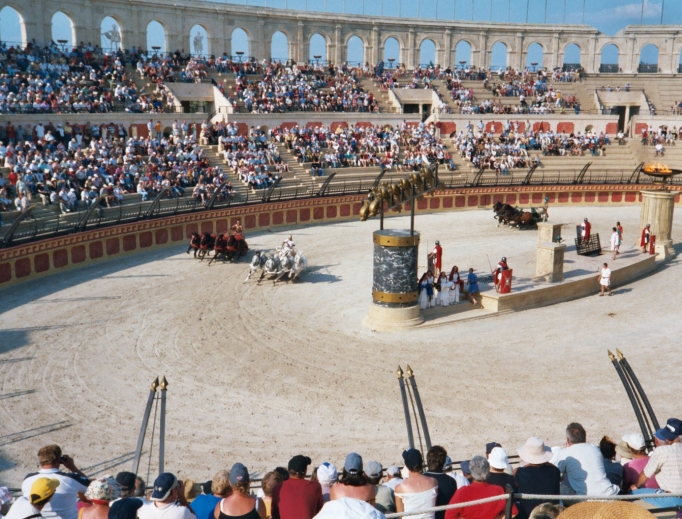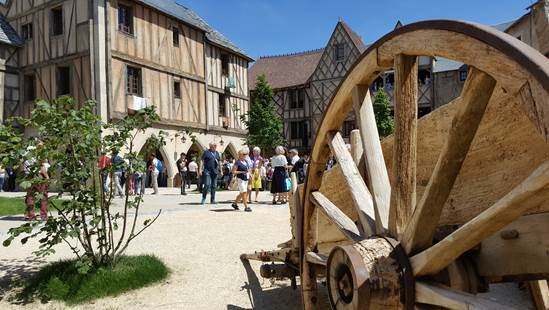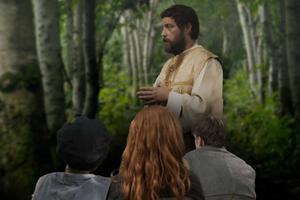French Catholicism — at a World-Class Theme Park
‘Puy du Fou’ offers an intimate and entertaining look at a country steeped in the faith.

A short drive from the Atlantic coast of France sits a theme park that brings to life gladiators, knights, musketeers, and Catholic counter-revolutionaries.
One of the world’s most highly regarded theme parks, “Puy du Fou” offers an intimate, entertaining look at French history, including the historic Vendée uprising.
Puy du Fou began with a dream and a ruined mansion.
Phillipe de Villiers, a 27-year-old student, had wanted to write a drama that showed the history of France. Finding a ruined mansion near the village of Les Epesses in the Vendée proved the catalyst for writing a story about a local family that would showcase hundreds of years of French history. He brought in 600 volunteers to create the show, called Cinéscénie, in 1978.
Today, more than 2,000 volunteer re-enactors participate in the production, making it the largest nighttime performance in the world. Other shows have been added to the park, blending the production quality of a movie with the immediacy of theater. More than 25,000 visitors enter the park during the summer peak season.
Gaëtan Favreau, a representative for Puy du Fou, told the Register that the success of the park has broken “all conventional marketing rules.”
“Puy du Fou doesn’t give visitors what they like, but what they might love,” he said.
It’s a formula that has seen repeated successes and awards. The park sees more than 2 million visitors a year and has won worldwide prizes.
For a park that eschews the screaming rides most midways offer, it’s an incredible achievement.
Bringing History to Life
The stories that the park tells cover different periods of French history, presenting them with a vividity and imagination that only live theater can capture. Most shows last about an hour and repeat throughout the day.
Visitors can begin their day sitting in a Roman amphitheater, watching teams of chariots race, and can cheer on slaves as they fight gladiators to win their freedom.

At another show, a small village celebrates a wedding and knighthood, until Viking raiders arrive on their longship. The French defenders gather at a nearby fort to fight and drive off the invading Vikings. Other shows present daring musketeers and flamenco dancers, or Christmas Eve on the front lines of World War I.
Amid the excitement, there are also islands of calm.
Puy du Fou contains rose gardens, medieval villages and forts, and a 135-acre nature reserve, while a small children’s castle allows young people to act out their own stories.
Favreau said that while Puy du Fou hosts entertaining shows, which allow guests to relax and enjoy new experiences, the park sets itself apart by connecting guests to their “roots.”
“Human beings always need to feel they are from somewhere; they need to feel that they belong to a community with its own habits and traditions. This community is, in fact, called civilization,” he said.
The crown jewel of the park, running only during the summer and typically booked months in advance, is the Cinéscénie performance. The scale is immense: 2,000 volunteer actors, 24,000 costumes, and several hundred horses are needed on a stage spread out over 56 acres.
Cinéscénie captures an impressive story, following a Vendée family from the 14th century up through World War II. The story captures the sense of place and history that so many guests come looking for.
Thierry Equinoxe, who runs a fan club for the park, said that he appreciates Puy du Fou because of the “emotion and beauty” of the shows. As he said, “It was at that moment that I became passionate about the history of France.”
One of his favorite shows has been a recent addition, Le Dernier Panache, which tells the story of a French naval captain who returns from the American War of Independence to a France gripped by its own revolution and civil war. The show’s energy, choreography, and also the history of the civil war behind the show, he said, are captivating, giving him “shivers.”
Reckoning With the Past
Favreau said that the park does not want to create “rivalries between people,” and so while the show touches on significant events in the Vendée’s history, like the 1793 uprising against the French Revolution, it does not take a partisan approach.
But for many in the region, the uprising led by their ancestors against the terror of the French Revolution remains a point of pride.

In 1793, the people of the Vendée, mostly peasants, rebelled against the Revolutionary government, raising a “Royal and Catholic Army” and taking the Sacred Heart as their emblem.
Although they met with initial success, their army suffered some defeats, and then the disastrous loss of their general, Jacques Cathelineau, on July 14, 1793. The last defeat came shortly before Christmas the same year, and the soldiers regrouped as guerillas.
The victorious Revolutionary Army, meanwhile, embarked on what several scholars have called a genocide against the inhabitants of the Vendée. Estimates of the dead range from 170,000-450,000 people, but the atrocities of the Revolutionary government against Catholic civilians has been well attested, with records of villages being razed and mass executions.
Jim Morlino, a filmmaker and producer who made The War of the Vendée, which aired on EWTN, and worked on another film about the Vendée uprising, The Hidden Rebellion, told the Register, “The Revolution entailed a horrendous persecution of the Church,” which was unpopular in many areas outside of Paris, leading to counter-revolts in regions like the Vendée.
The region continues to be conservative and traditional, in faith and politics, and maintains pride in its historic rejection of the French Revolution and the subsequent Reign of Terror.
While the rest of France celebrates Bastille Day on July 14, Morlino said, men and women in the Vendée commemorate the death of their hero and local “saint,” Jacques Cathelineau, with a Mass, Eucharistic procession and a feast.
The same quietness the park brings to painful histories is also brought to Catholicism. Although he said that some visitors have complained about Catholicism being visible at the park, Thierry Equinoxe said that attitude “makes no sense.”
“In every French village, there was a church,” he said. “The birth of France is based on the faith.”
Register correspondent Nicholas Wolfram Smith writes from Rochester, New York.

















